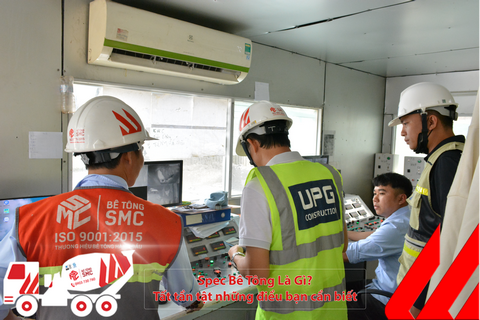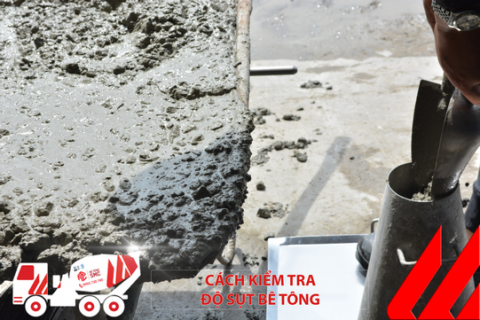Frequently asked Questions
Concrete engineering advice
Business contact
Choosing the Right Materials for Concrete in Construction
When building a house, the most important factor for homeowners is the durability of the structure. Concrete quality plays a central role in determining the strength and lifespan of the house. A good batch of concrete not only depends on the mixing technique but, more importantly, on the quality of the aggregates, including stone, sand, cement, and additives. If the materials are not selected correctly, the concrete may become porous, cracked, and lose strength over time.
1. Clean Stone – The Main Component of Concrete Aggregates
Among the materials that make up concrete, stone serves as the load-bearing framework, ensuring the concrete's high strength. Therefore, choosing the right stone is crucial. The stone used in concrete should have a suitable size, with the most common being 1x2 cm or 2x4 cm, to ensure good bonding. The stone must be clean and free from mud, soil, or organic impurities because these contaminants can reduce the concrete’s strength, leading to deterioration of the structure.
Many people overlook checking the quality of the stone, leading to problems like hollow concrete or concrete that doesn't achieve the desired hardness. To check the cleanliness of the stone, it can be washed with water. If the water becomes muddy, it means the stone contains excessive dirt and needs to be cleaned before use. A sturdy building cannot be constructed with low-quality materials.
1.1. Standards for Choosing Natural Stone for Concrete
Natural stone used in concrete must meet specific standards to ensure the quality of the structure. According to TCVN 7570:2006 – Vietnam Standard for Aggregates for Concrete and Mortar, crushed stone and natural gravel must meet the following requirements:
-
High mechanical strength: The stone must have a compressive strength greater than 800 kg/cm² to ensure good load-bearing capacity for the concrete.
-
No impurities: The stone must not contain clay, mud, dust, or organic materials because these will reduce the bonding between cement and the aggregates, affecting the concrete’s strength.
-
Low content of flat or elongated particles: Stones with too many flat or elongated particles will reduce the concrete density and affect the strength. According to standards, the amount of flat or elongated particles must not exceed 35% of the total weight.
-
Low water absorption: Stones with high water absorption can affect the water/cement ratio during mixing, leading to concrete that doesn’t reach the desired hardness. The water absorption rate should not exceed 2%.
-
No harmful minerals: The stone must not contain harmful substances such as coal, sulfate, or easily weathered minerals, as these could reduce the concrete’s longevity over time.
When selecting stone, prioritize high-hardness types such as granite, and avoid using weathered limestone as it degrades over time. To ensure quality, stone should be sourced from licensed quarries and thoroughly tested according to technical standards before use.
Choosing the right aggregates not only helps achieve high-strength concrete but also minimizes the risk of cracking and settling after construction. A durable structure always starts with high-quality materials.
2. Building Sand – A Key Factor in Bonding
Not only the stone but also the sand plays an important role in determining the bonding ability of concrete. One common mistake when selecting sand is using types that contain too much dust, clay, or even salty sand from coastal areas. These types of sand not only reduce the bonding of the concrete but may also cause corrosion of the steel reinforcement inside, leading to rapid deterioration of the structure.
There are two main types of sand used in concrete: natural sand and crushed sand. Each type has its own characteristics and must meet certain standards to ensure the concrete's quality.
2.1. Natural Sand – The Traditional Choice in Construction
Natural sand is mined from rivers, streams, or natural sand quarries. This sand has round grains, smooth surfaces, and high uniformity, which helps improve the bonding with cement. In construction, natural yellow sand is often preferred because of its high cleanliness and low impurities, ensuring good bonding when mixed with concrete.
However, due to the high demand, natural sand is becoming increasingly scarce, leading to higher costs. Moreover, excessive extraction of natural sand can harm the environment, causing soil erosion and altering river currents. Therefore, many modern projects now opt for crushed sand as an effective alternative.
2.2. Crushed Sand – A Cost-Effective and Sustainable Solution
Crushed sand is produced by grinding natural stone, typically granite, limestone, or basalt. Crushed sand has angular grains and a rougher texture compared to natural sand, which improves its bonding ability with cement, resulting in stronger concrete.
The advantage of crushed sand is its abundant supply, stable prices, and lower environmental impact. However, the downside is that it may contain more fine dust, which, if not properly washed before use, can reduce the concrete’s strength. Therefore, when using crushed sand, it’s essential to ensure that the production process follows standards and the quality is thoroughly checked before it is used in construction.
In conclusion, choosing the right aggregates—whether stone or sand—is essential for producing durable, high-strength concrete. Proper selection, along with adherence to standards, ensures that the concrete will not only be strong but also last for many years, ensuring the safety and longevity of the building.
Other news
Currently, ready-mix concrete is a top choice for many construction projects—both large and small—thanks to its convenience, consistent quality, and high construction efficiency. With extensive experience supplying commercial concrete for numerous key projects in the Southern region, SMC proudly offers a diverse range of ready-mix concrete products to meet the technical requirements of every type of construction.
A Comprehensive Guide to Concrete Specs – Everything You Need to Know
A Complete Guide to Concrete Specs – a set of technical parameters including concrete grade, slump, compressive strength, aggregate size, and mix ratio. This article helps you understand how to define, apply, and control concrete quality according to TCVN standards and practical construction conditions.
How to check the concrete slump
In construction and civil engineering, concrete slump test (or simple slump test) is the work performed at the construction site or in the laboratory that usually determines and measures the hardness, consistency of samples. Concrete before pouring concrete or casting maintenance, research or experiment samples.




